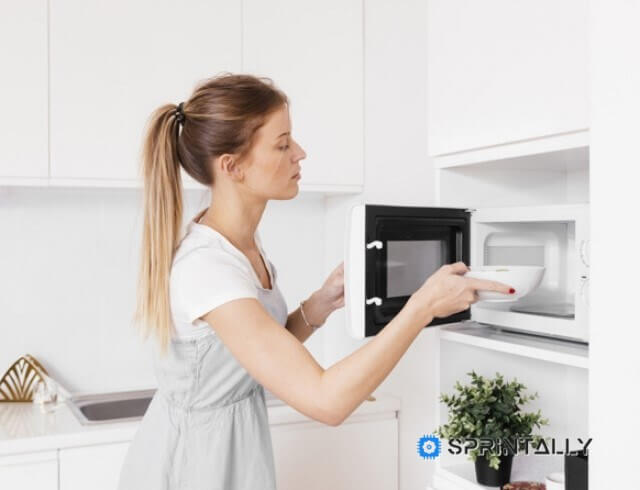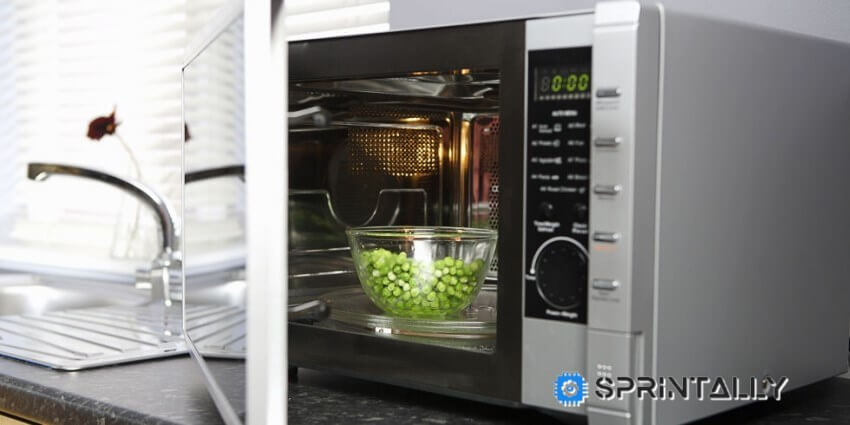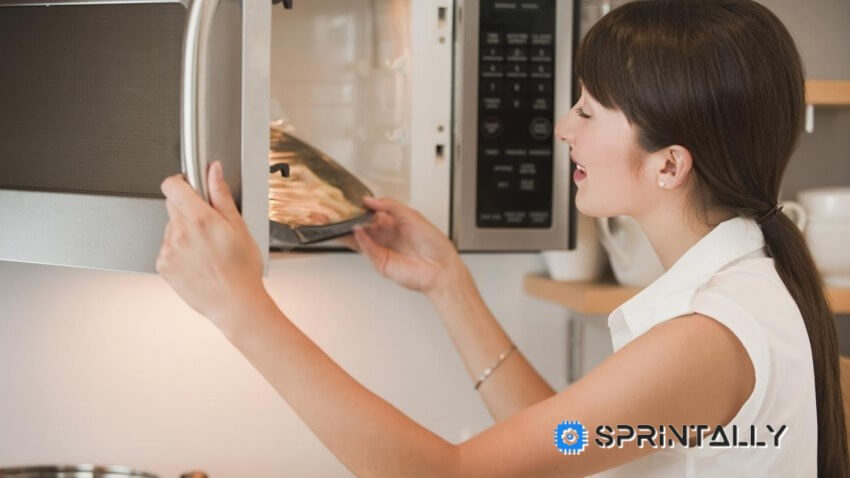Harm of microwaves: fiction or truth?

The harm of microwaves: When it comes to the microwave, everyone just talks about the harm that it brings to households. And forms carcinogens in products and reduces nutrients in them. But, as in any topic, there are many contradictions and absolutely opposite opinions. So is it still possible to heat food in the microwave?
Microwaves (a microwave oven is named after them) are high-frequency radio waves. They are used in television broadcasting, air and sea navigation and mobile communications. Yes, there is also a lot of gossip about the radiation and the dangers of a mobile phone and other gadgets in the bedroom. Depending on the material affected by the microwaves, they are either reflected, conducted, or absorbed by the material.
For example, microwaves are reflected from metal surfaces, while for glass and some types of plastic they remain “invisible”. But materials containing water (like food) absorb the energy of microwaves - it transforms into heat and leads to heating.
The principle of operation of the microwave

Microwaves in a microwave oven are produced by a special tube called a magnetron. The uniformity of heating is often provided by a special rotating tray on which the dishes are installed. Absorbing the energy of microwaves, the water molecules in the products begin to vibrate, and as a result of their friction and collision, heat arises, which cooks the food.
Unlike conventional ovens, the heat of which can be felt standing at a certain distance, microwaves are only absorbed by the food inside the oven and do not affect the environment outside and around the oven.
Differences in cooking in the oven and microwave
Experts of the World Health Organization argue that the main difference between traditional methods of cooking and microwave cooking is that the energy of microwaves penetrates into foods faster and deeper, respectively, and cooks food faster. The rest of the food, cooked in the microwave, is just as safe and in the amount of nutrients it is not inferior to a conventional oven and stove.
Do you remember that with any heat exposure, most nutrients partially lose their beneficial properties? And some may even be completely destroyed. Cooking vegetables in large quantities of water generally leads to the digestion of nutrients into a liquid, which means that beneficial vitamins and minerals simply disappear.
When cooking in the microwave, we do not use a large amount of liquid, we process the product for the minimum amount of time, which means we retain more nutrients!
If it seems to you that cooking raw vegetables in the microwave does not work, then try this: use a small amount of water, then the vegetables will be cooked as if steamed. Thus, we will preserve useful nutrients in vegetables. Spinach prepared in this way, for example, will retain the full amount of folic acid. And the digestibility of useful carotenoids from carrots and tomatoes will increase.
Is it harmful to use a microwave?

Of course, based on the above advantages, using a microwave oven is safe. Food from the microwave will not be radioactive, and microwaves will remain inside the oven and will not stay in food after it is turned off.
Experts explain that microwaves work like light: when the light is off, the light cannot burn. Therefore, if everything is done correctly, then, in addition to the obvious advantage in speed, microwave cooking is also one of the best ways to preserve vitamins and minerals in food.
Safety regulations
But, as with any technique, there are times in which to be careful.
If microwaves leak, thermal burns are possible. Microwaves can leak in damaged ovens and through a loose door, and if they are exposed for a long time to soft tissues (skin, eyes), they can be burned. Therefore, it is important to keep the microwave clean and in good condition, as well as always close the door tightly when used.

Burns can also occur due to ordinary absent-mindedness: carefully take out heated food from the microwave - dishes may turn out to be too hot. Be careful with liquids in the microwave: boiling water in the microwave has its own characteristics. Water can boil very quickly and unexpectedly, and this will manifest itself in the form of one big bubble.
Some products from microwave heating may explode. This is inherent in products with a non-porous surface, such as eggplant, as well as products consisting of components that react differently to heat, say, egg white and egg yolk.
Therefore, baking eggplant, pre-pierce its surface with a fork or knife in several places. And the eggs in the shell in the microwave - generally not recommended.
From uneven heating, harmful microorganisms can remain in the food, which is potentially hazardous to health. It is worth remembering that the degree of heating of products in a microwave oven depends on a number of factors, including the water content, density and quantity. Microwaves penetrate into dense substances worse, which can lead to uneven heating of food. Therefore, after cooking, it is worth giving her a few minutes to "rest": this will allow the heat to evenly distribute from the inside.
If you use plastic containers, use only those marked “microwave safe”. But it is better to take a glass or ceramic dishes.

Heating of some impurities (plasticizers) added to the plastic, especially BPA and phthalates, lead to their release into food, which can negatively affect health, as well as the work of the endocrine system in particular. Therefore, choose only microwave safe containers.
Do not be afraid of the microwave. Sometimes it becomes a real magic wand! For example, when you are running out of time, and you don’t feel like skipping a meal, or in the office, when you eat food preheated in the microwave, you have only an alternative to chips or crackers.





